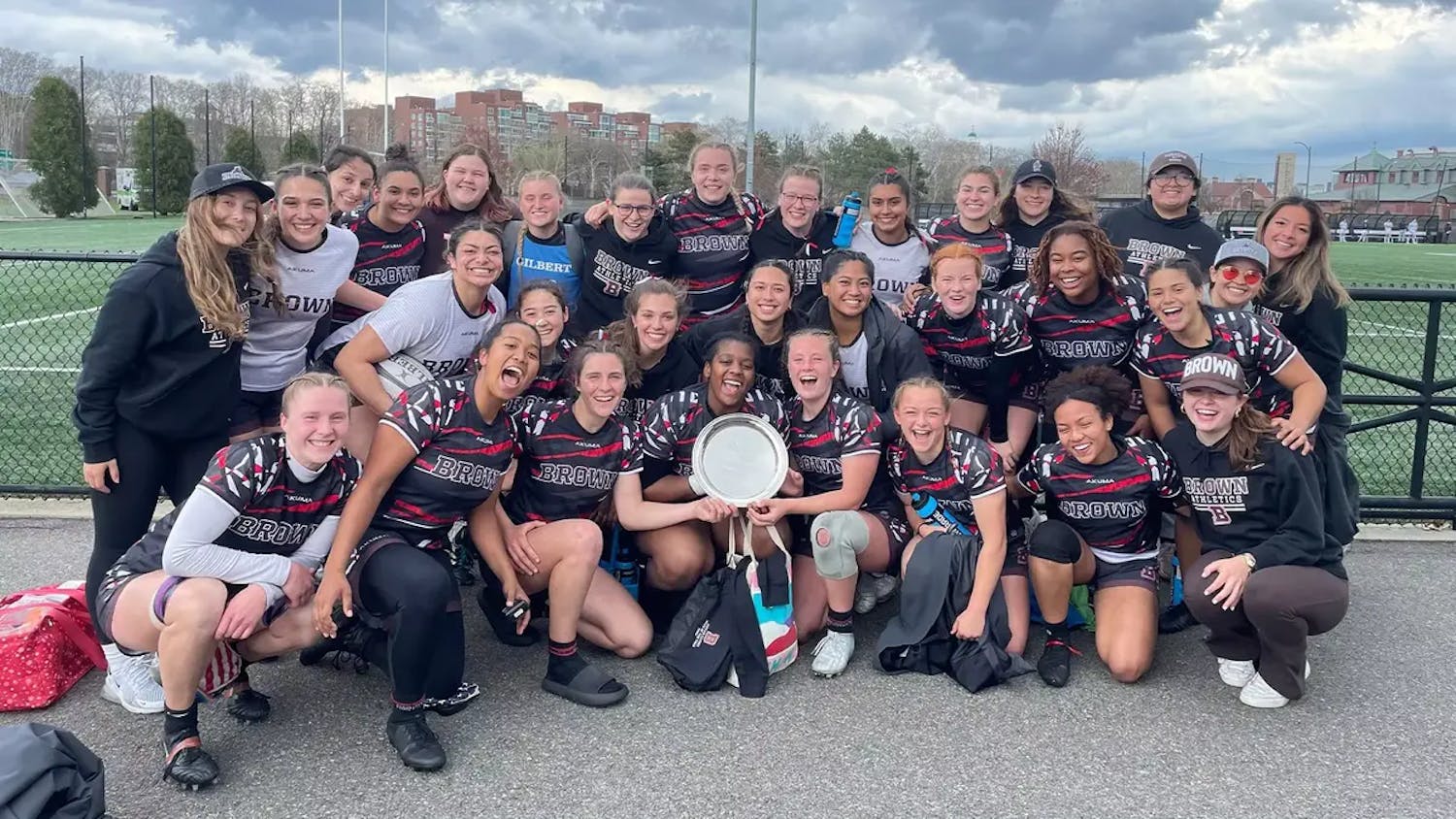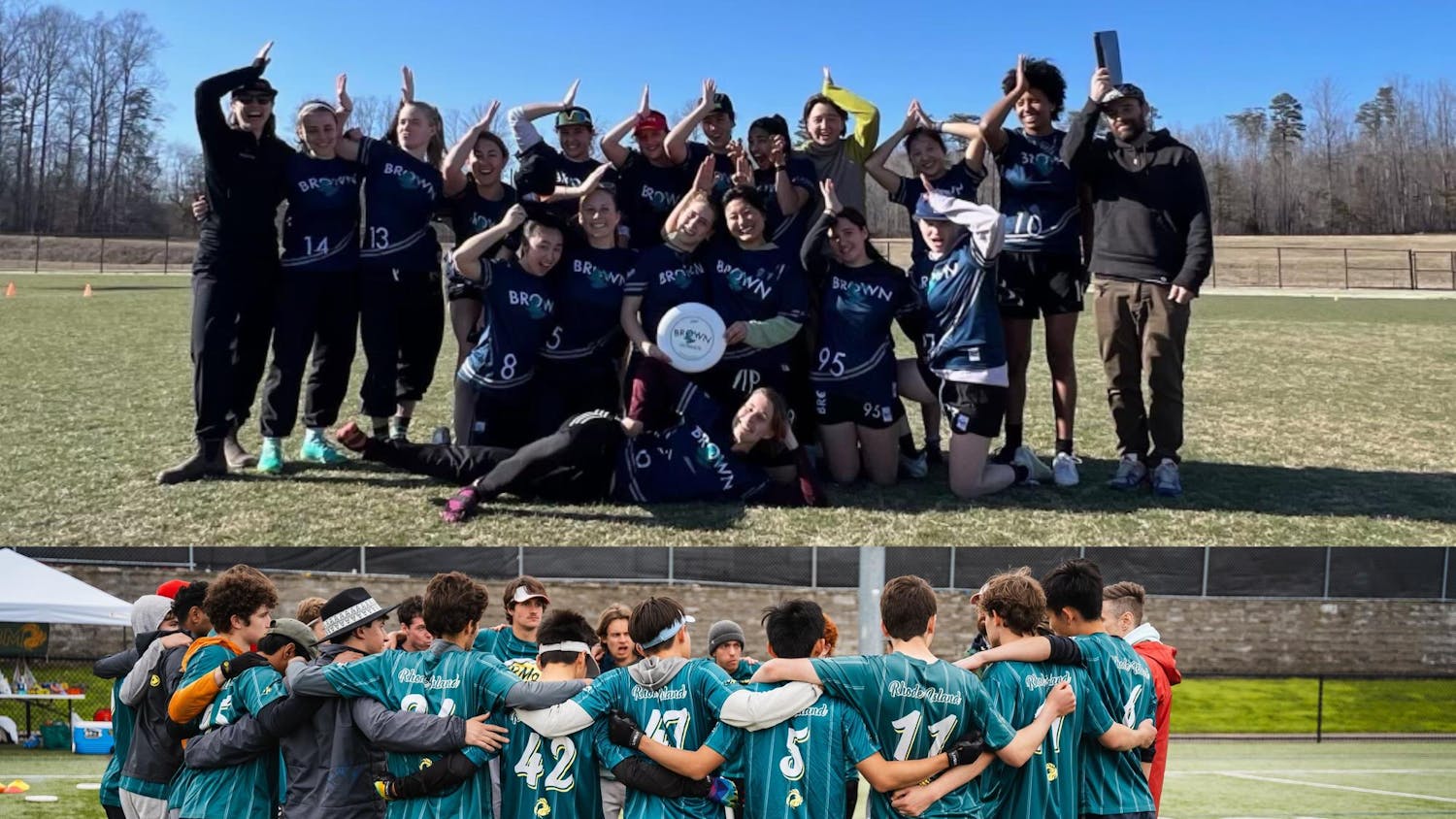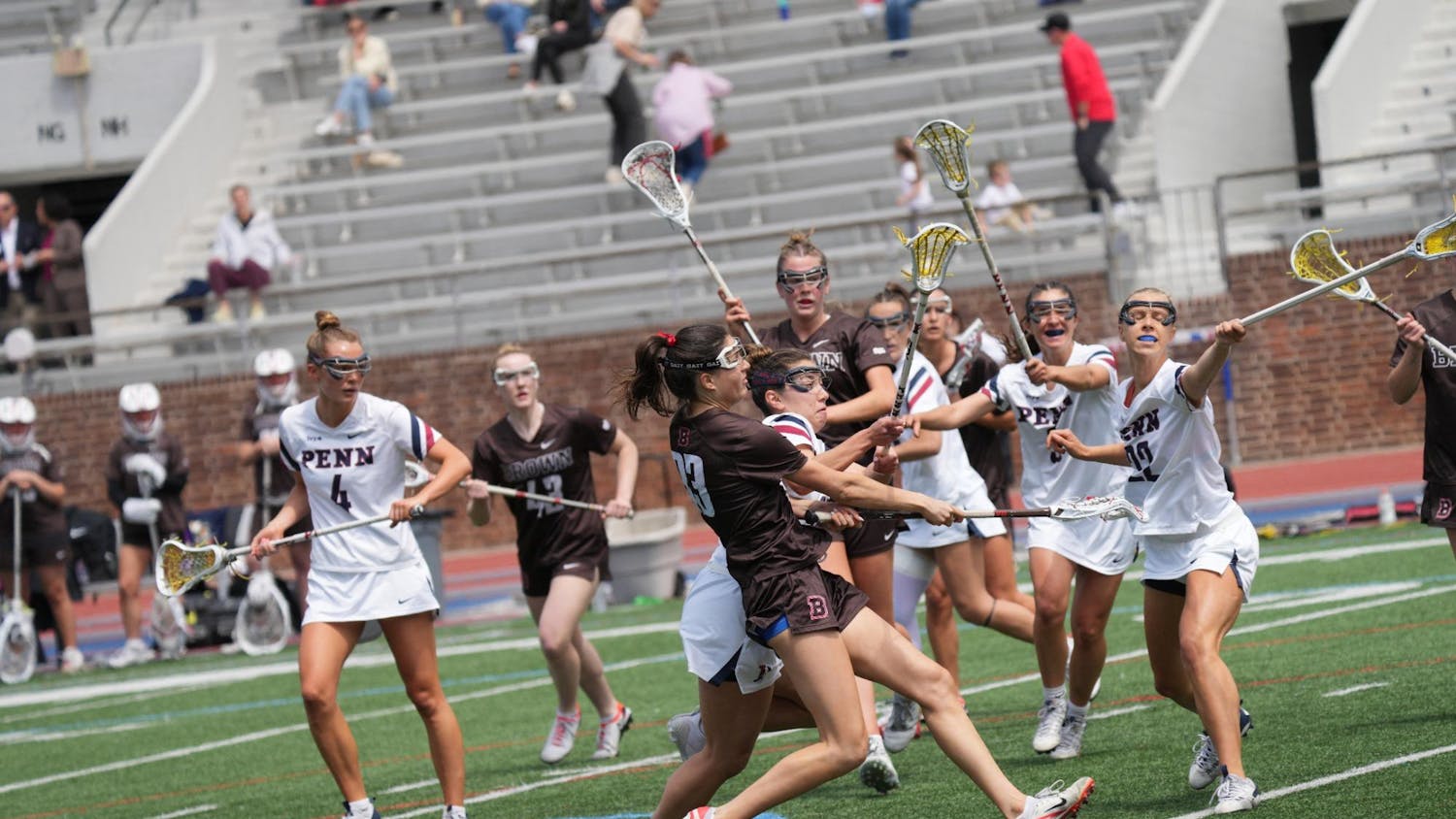With Ivy League basketball season in full swing, the Bears picked up two crucial wins against the Big Red and the Lions this weekend, elevating them to second place in the conference.
The Bears started the weekend with a convincing 78-66 victory over Cornell. Bruno then took down Columbia 64-56 in a game that remained close until the closing minutes. Here is a look at some of the keys to Bruno’s success.
What’s strong
Against Cornell, Norman Hobbie ’17 and Steven Spieth ’17 both contributed 18 points, eclipsing teammate and Ivy League leading scorer Sean McGonagill ’14. The next day, Rafael Maia ’15 posted an 18-point outing of his own, and Cedric Kuakumensah ’16 bolstered Bruno’s scoring with 13. Against Columbia, McGonagill scored just third-most on the team for the second game in a row, with 10 points on a tough 2-of-10 night from the field.
Though Columbia kept its focus on McGonagill, other Bears performed well, said Head Coach Mike Martin ’04. “His fellow captains (Maia and Kuakumensah) stepped up and were great. Up and down the lineup we got great contributions.”
“I was wide open a few times (against Cornell) — it kind of shocked me,” Hobbie said. “When I go in the game, I try to take as much pressure off of Sean as I can by getting open.”
Utilizing offensive sources other than McGonagill will be critical to the Bears’ success in the future. If an opponent is able to lock down the All-Ivy senior, other members of the team will have to carry the scoring load. With Columbia and Cornell keying on the team’s star, role players and starters alike stepped up.
The Bears also displayed strong perimeter defense in both games, which has been one of the team’s strengths all season. Bruno held Cornell to 3-of-22, a meager 14 perecent, shooting from beyond the arc. Columbia fared slightly better than Cornell, shooting 6-of-22 from deep — about 12 percent lower than the team’s season average.
What’s wrong
The Bears struggled with free throws throughout the weekend, shooting a combined 27-of-44 over the two games. These numbers are consistent with the team’s performance from the charity stripe this season, where they hold the lowest conversion rate in the conference at about 64 percent.
Bruno also showed some weakness in defending the pick and roll. Columbia and Cornell had success driving past the first Brown defender, often forcing a defensive rotation to help toward the slashing ball carrier. This difficulty stopping a one-on-one drive led to a number of uncontested layups and threes.
Kuakumensah was often called on to protect the paint. The Ivy League’s leader in blocks posted four against Cornell but was unable to turn any shots away against Columbia. Maodo Lo and Grant Mullins, Columbia’s starting guards, got into the paint frequently, eluding Kuakumensah for easy layups and drawing fouls from the big man.
The Bears will have to work harder in future games to fight through picks and stay with the ball handler, instead of switching or simply letting the player drive to the basket.
What’s new
One way to beat a screen offense is to eliminate the pick-and-roll entirely. About five minutes into the second half against Columbia, the Bears switched from their usual man-to-man defense to a 2-3 zone. The zone effectively took away the screen and forced the Lions to pass the ball around the perimeter, often making them settle for long jumpers.
Though they stuck with the strategy only for a few possessions, the Bears held Columbia to 4-of-17 shooting after employing the zone. The Lions failed to hit a field goal in almost 10 minutes to end the game.
The zone “may have gotten them out of rhythm,” Martin said. “They had us in some scramble situations when we were playing man in the first half … so I thought the zone was a good change of pace, but our bread and butter is our man-to-man defense.”
Despite its sizable impact against Columbia, don’t expect Martin to turn to the zone frequently. While it flummoxed the Lions momentarily, as they struggled to work the ball inside to their post players — something they had done all game — zones are often easily broken once holes are discovered.
Bruno might go to the 2-3 zone next weekend against Harvard, a team that averages the second-most points in the Ancient Eight. The Crimson do not look to shoot threes — they have the fewest attempts from beyond the arc in the conference. A zone would pack the key and force Harvard to take more perimeter jumpers, which could give the Bears an edge and eventually lead Bruno to first place in the Ivy League.
ADVERTISEMENT




